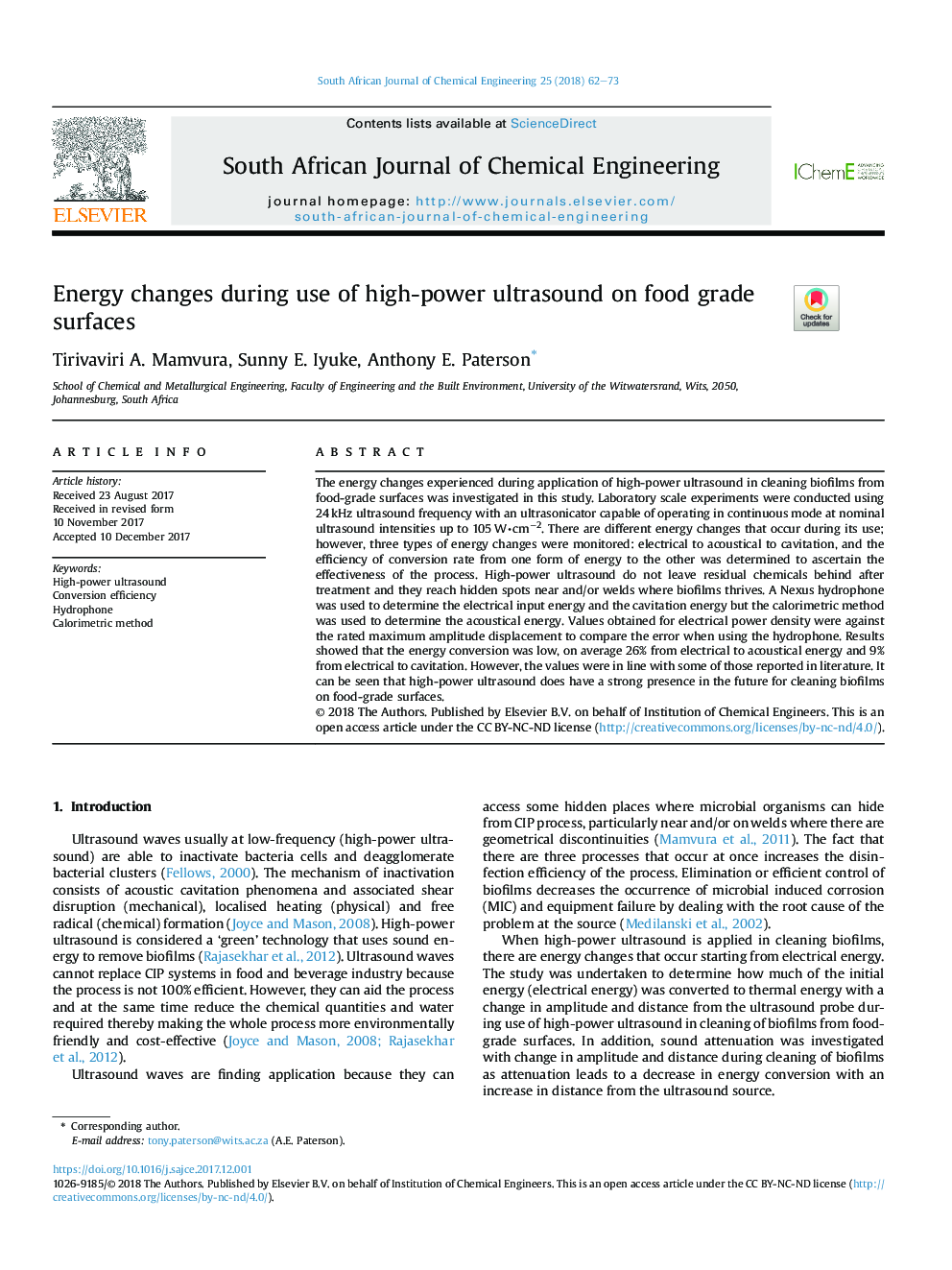| Article ID | Journal | Published Year | Pages | File Type |
|---|---|---|---|---|
| 8917048 | South African Journal of Chemical Engineering | 2018 | 12 Pages |
Abstract
The energy changes experienced during application of high-power ultrasound in cleaning biofilms from food-grade surfaces was investigated in this study. Laboratory scale experiments were conducted using 24â¯kHz ultrasound frequency with an ultrasonicator capable of operating in continuous mode at nominal ultrasound intensities up to 105â¯Wâ
cmâ2. There are different energy changes that occur during its use; however, three types of energy changes were monitored: electrical to acoustical to cavitation, and the efficiency of conversion rate from one form of energy to the other was determined to ascertain the effectiveness of the process. High-power ultrasound do not leave residual chemicals behind after treatment and they reach hidden spots near and/or welds where biofilms thrives. A Nexus hydrophone was used to determine the electrical input energy and the cavitation energy but the calorimetric method was used to determine the acoustical energy. Values obtained for electrical power density were against the rated maximum amplitude displacement to compare the error when using the hydrophone. Results showed that the energy conversion was low, on average 26% from electrical to acoustical energy and 9% from electrical to cavitation. However, the values were in line with some of those reported in literature. It can be seen that high-power ultrasound does have a strong presence in the future for cleaning biofilms on food-grade surfaces.
Related Topics
Physical Sciences and Engineering
Chemical Engineering
Chemical Engineering (General)
Authors
Tirivaviri A. Mamvura, Sunny E. Iyuke, Anthony E. Paterson,
